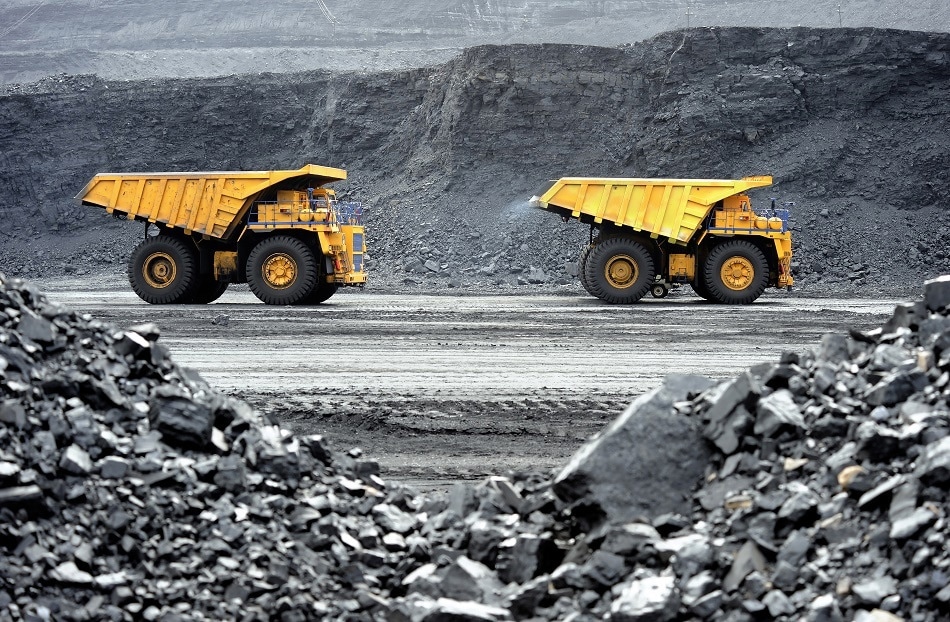 By Owais AliReviewed by Lexie CornerUpdated on Oct 23 2024
By Owais AliReviewed by Lexie CornerUpdated on Oct 23 2024The mining industry has historically lagged in technological advancements, but the growing demand for precious metals and minerals driven by renewable technologies is prompting the sector to adopt new solutions. Laser technology has transformed mining by enabling precise mineral detection, efficient rock fragmentation, reduced operational costs, and improved sustainability.

Image Credits: AButyrin/shutterstock.com
Current Applications of Lasers in Mining
3D Mapping for Monitoring and Geological Surveys
Laser mapping enhances safety by providing real-time, high-precision 3D maps of rock faces, helping detect instability and monitor mine wall movements. This technology offers early warnings of potential collapses, which is crucial for maintaining safety in open-pit mining operations.
Laser systems also enable accurate geological mapping, allowing operators to quickly and safely survey underground areas and create 3D models that improve decision-making.1
Mineral Detection and Resource Extraction
Laser technology enhances mining operations by utilizing focused energy beams for precise mineral detection and analysis through reflectance spectroscopy and spectral imaging. It also improves rock fragmentation by generating high temperatures that create fractures in the material, minimizing the need for explosives.
These advancements lead to more efficient resource extraction, reduced environmental impact, and lower operational costs.
Laser Level Transmitters for Measurement
Laser-level transmitters are commonly applied in mining to measure ore levels in silos and chutes, optimizing process control in harsh environments. Their narrow beam allows for accurate readings even in challenging conditions.
HAWK's OptioLaser L100 and L200 are widely used transmitters that excel in these tasks, offering long-range and short-range measurement versatility for solid and liquid surfaces.2
Mineral Sorting
Laser-based sorting systems distinguish valuable minerals from waste by analyzing how materials scatter laser light. This approach significantly enhances mineral recovery rates and product quality.
Tomra's multi-channel laser sorting technology is a prime example, increasing quartz recovery by up to 20 % while reducing water usage and minimizing the need for manual sorting.3
Laser Drilling
Laser technology offers a precise and energy-efficient alternative to traditional drilling methods. Lasers can cut through rock, eliminating the need for conventional drilling and blasting methods, thus reducing energy consumption and costs. This method allows for greater precision and generates smaller, more manageable rock fragments.
Commercial ytterbium-doped fiber laser systems can drill 25 cm diameter bores to depths of up to 3.5 meters, spalling up to 2.6 tons of material per hour. This method also minimizes environmental impact by reducing the melting or vaporization of rock during excavation.4
Emerging Technologies and Their Impact on Mining
Real-Time Analysis with LIBS Technology
Recent advancements in laser-induced breakdown spectroscopy (LIBS) have improved mineral identification by mapping chemical element distributions in geological samples.
This technique addresses traditional limitations through feature extraction and clustering algorithms, enhancing understanding of mineral composition. In addition, it can boost operational efficiency in mineral identification and ore sorting by up to 30 % by accurately distinguishing high-value materials from waste.
LIBS also facilitates real-time chemical analysis in mining by generating plasma from focused laser pulses, enabling on-site assessments of detailed elemental compositions. This method is especially effective for detecting valuable minerals such as platinum-group elements (PGEs), leading to a reduction in sample testing time and costs by approximately 50 %.5,6
Non-Destructive Mineral Analysis
New Mexico Tech recently developed a high-resolution confocal Raman microscope for non-destructive mineral analysis. This microscope utilizes green and ultraviolet lasers to investigate materials like hydrocarbons and gemstones.
This technology generates spectra that enable precise identification of minerals, essential for understanding the behavior of rare earth elements (REE) in crustal fluids. It is particularly valuable for characterizing gemstones and studying key resources like copper and gold, providing detailed insights into chemical compositions and bonding structures without sample preparation.7
3D Spatial Laser Scanning in Mineral Processing
Laser scanners are increasingly utilized in mineral processing to evaluate equipment wear, such as grinding mills and crushers.
Scanalyse, a start-up from Curtin University, has pioneered 3D spatial laser scanning technologies that provide precise condition monitoring. This innovation helps mitigate the risk of catastrophic failures and optimize replacement schedules.
The technology generates high-resolution 3D models of mill and crusher interiors, enabling accurate predictions of wear patterns and improving maintenance forecasting. This ultimately enhances safety and financial efficiency in mining operations.
This, in turn, reduces energy consumption—typically around 60 % of a mine site's energy use—minimizes costly downtime, and significantly lowers the risk of major failures.8
Future Trends in Mining Operations
The pursuit of autonomous face drilling represents a significant trend in mining technology, enhancing operational efficiency, improving safety, and reducing labor costs while increasing precision in ore extraction. Industry leaders are collaborating with research institutions to develop advanced algorithms and integrate sensors and artificial intelligence, facilitating real-time data analysis and decision-making in drilling operations.
A prominent initiative involves Epiroc, Boliden, Algoryx, and Örebro University, aiming to develop fully autonomous face drilling systems by equipping drilling rigs with laser scanners and AI. These systems will enable real-time analysis of the mine face and adjustments to drilling plans, thereby improving precision and efficiency while minimizing human intervention.9
The integration of laser technology in the mining industry marks a significant shift in operational practices, enhancing precision drilling, safety monitoring, and mineral identification.
As mining companies innovate and collaborate, advancements in laser technologies will revolutionize extraction methods and pave the way for smarter, more precise mining operations, redefining the future of resource extraction.
Discover More: Investment Trends in the Mining Sector: Where Capital is Flowing in 2024
References and Further Reading
- Kumar Singh, S., Pratap Banerjee, B., Raval, S. (2023). A review of laser scanning for geological and geotechnical applications in underground mining. International Journal of Mining Science and Technology. https://doi.org/10.1016/j.ijmst.2022.09.022
- Casey, J. (2021). Hawk Measurement Systems launches new laser level products. [Online] Global Mining Review. Available at: https://www.globalminingreview.com/product-news/16032021/hawk-measurement-systems-launches-new-laser-level-products/
- Tomra. (2020). Erimsa quartz laser sorting. [Online] Tomra. Available at: https://www.tomra.com/en/mining/media-center/feature-articles/erimsa-quartz-laser-sorting
- Bharatish, A., Kishore Kumar, B., Rajath, R., Narasimha Murthy, H. (2019). Investigation of effect of CO2 laser parameters on drilling characteristics of rocks encountered during mining. Journal of King Saud University - Engineering Sciences. https://doi.org/10.1016/j.jksues.2017.12.003
- Capela, D., Ferreira, MF., Lima, A., Dias, F., Lopes, T., Guimarães, D., Jorge, PA., Silva, NA. (2023). Robust and interpretable mineral identification using laser-induced breakdown spectroscopy mapping. Spectrochimica Acta Part B: Atomic Spectroscopy. https://doi.org/10.1016/j.sab.2023.106733
- Rifai, K., Michaud Paradis, M., Swierczek, Z., Doucet, F., Özcan, L., Fayad, A., Li, J., Vidal, F. (2020). Emergences of New Technology for Ultrafast Automated Mineral Phase Identification and Quantitative Analysis Using the CORIOSITY Laser-Induced Breakdown Spectroscopy (LIBS) System. Minerals. https://doi.org/10.3390/min10100918
- New Mexico Tech. (2022). New Instrument Allows Researchers To See Inside Minerals. [Online] New Mexico Tech. Available at: https://nmt.edu/news/2022/raman-lab.php
- Long, J. (2018). Scanalyse brings laser precision to mineral processing. [Online] Curtin University. Available at: https://research.curtin.edu.au/news/scanalyse-brings-laser-precision-mineral-processing/?type=news
- Lundberg, O. (2023). Epiroc leads collaborative project for autonomous face drilling. [Online] Epiroc. Available at: https://www.epiroc.com/en-us/customer-stories/2023/epiroc-leads-collaborative-project-for-autonomous-face-drilling
Disclaimer: The views expressed here are those of the author expressed in their private capacity and do not necessarily represent the views of AZoM.com Limited T/A AZoNetwork the owner and operator of this website. This disclaimer forms part of the Terms and conditions of use of this website.